noun pa-limp-sest \ pa-l m(p)- sest, p - lim(p)-\
: a very old document on which the original writing has been effaced and replaced with newer writing
: something that has changed over time and shows evidence of that change
: a very old document on which the original writing has been effaced and replaced with newer writing
: something that has changed over time and shows evidence of that change
The capacity to remember is propelling through a transformative chapter. The substratum of human memory is slowly collapsing as more and more information is saved and externalised on hard drives and online cloud services. While the mankind’s burgeoning desire is to rescue every bit of data from obscurity and safeguard scientific and cultural knowledge for future civilisations, remembering as a hominal act, seems to be turning into an increasingly fragile constitution; perhaps even more so than forgetting.
Regrettably, technological acceleration risks the preservation of entire bodies of information. This is due to the decreasing life-span of digital formats and platforms. Large scientific institutions like NASA for example have been forced to encounter the quirks of digital revolution with diligence. Their efforts have been progressively focused on recovering data from complete obliteration by decoding it from obsolete file formats, used perhaps not more than a decade or two ago.1 This said, digital dark age is not a mere wrinkle in the sci-fi lexicon but a factual threat if sustainable methods for safekeeping mankind’s history are not addressed with urgency.
Philippe Braquenier's Palimpsest is an exhibition that crops up from this hastily progressing technological landscape. In architecture, the word palimpsest is used to refer to the accumulation of design elements in a particular place over time. Braquenier’s Palimpsest avows the historical tiers of architectural and environmental fabric that nest in conjunction with the digital matter hidden from the view. The exhibition bears witness to the infrastructures of information repositories; libraries, data centres and both natural and built environments that conceal a strong, although not always an oblivious archival reference.
Natural and digital milieus merge and become rather contiguous in Braquenier’s work. This proximity seems to propose a dependency in which one cannot exist without the other. Braquenier’s interest in the information depots expands effortlessly from the question of their relationship to landscape and urban infrastructures to what is required to sustain the archives of human history. The legends unearth the contextual foundations of the images and fortify the analogy between the natural and technological ontogeny. The aesthetic quality of Braquenier’s work is exquisite and well-measured, and points us to consider our forever sprouting interactions with technology.
Words by Dana Amina Daniela Benlakhdar.
02012 - Present
Words by Dana Amina Daniela Benlakhdar.
02012 - Present

Google Data Center – Baudour, Belgium – 20/08/02013
Google refused to grant me authorisation to access its data center. During a meeting, the head of communication told me that “No one has ever come in and no one ever will.” Google’s complex in Belgium is completely hidden by woods and artificial dunes. Security cars make round 24/7. There is no indication that Google stands there but instead a company named Crystal Computing. Research reveals that the latter is a subsidiary of Google.
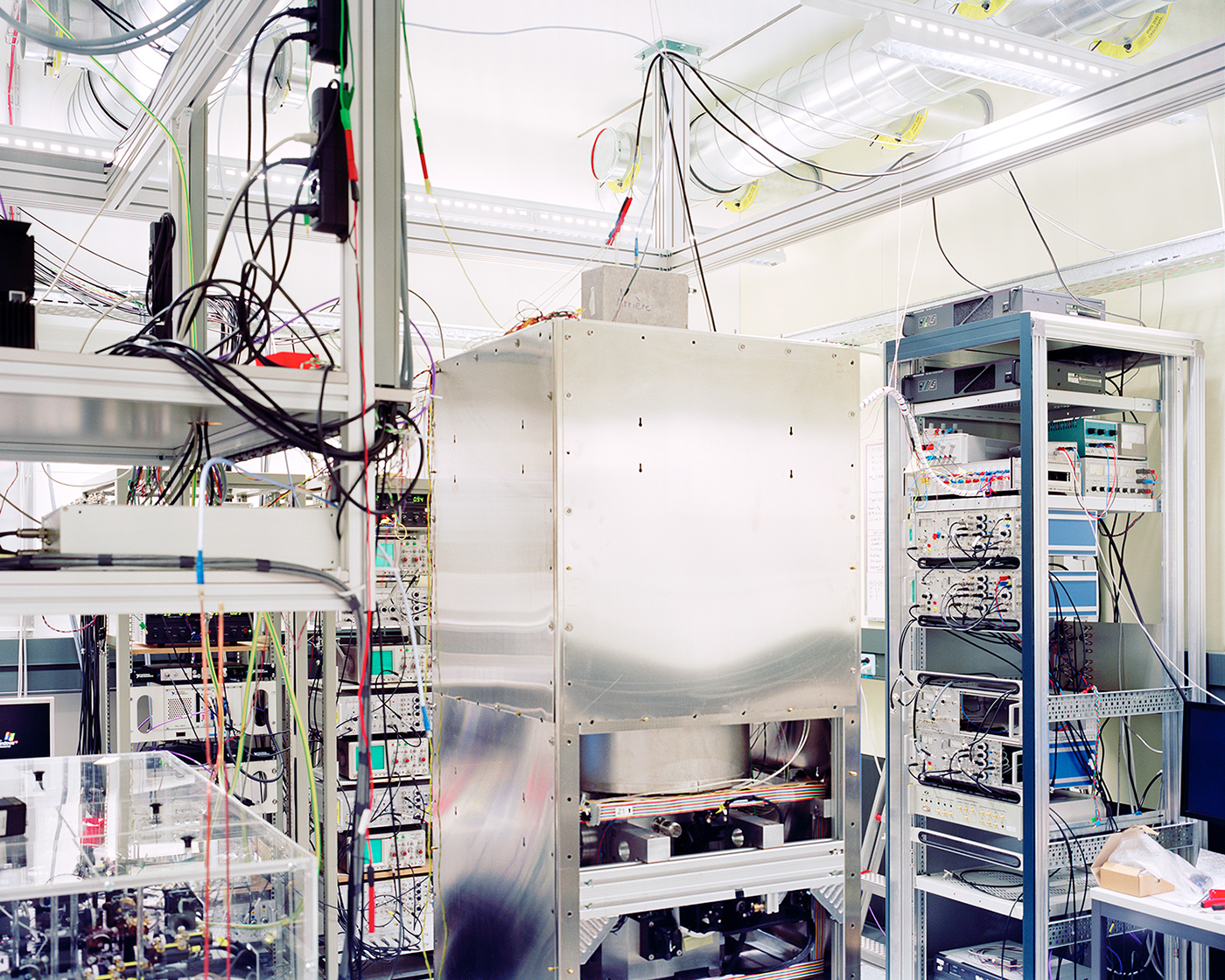
Metas (Swiss Federal Office of Metrology) – Bern, Switzerland – 17/03/02014
FOCS 1, a continuous cold caesium fountain atomic clock located in Switzerland, started operating in 02004 at an uncertainty of one second in 30 million years, thereby becoming one of the most accurate and unique devices for measuring time in the world. It is one of five atomic clocks in the Time and Frequency Laboratory of METAS that provides the data used to compute Coordinated Universal Time (UTC) at the Bureau International des Poids et Mesures (BIPM), which compares data from approximately 250 clocks distributed around the globe. This laboratory is kept well shielded from external influences such as vibration or temperature and humidity fluctuations. The main goals of this lab are to participate in the realization of the international atomic time standard (TAI) and to be part of the ground station system for the 02016 ACES (Atomic Clock Ensemble in Space) mission, in which a primary atomic clock will be operated in the International Space Station and will be compared with atomic clocks on Earth.

CERN – Geneva, Swirzerland – 19/03/02014
All servers in the main room of 1,450 m2 is the level 0, the first point of contact between the LHC experimental data and the Grid. The 95 000 processor cores and 10 000 servers hosted in its data center run 24/7. A remote extension of the CERN Data Centre is hosted at the Wigner Research Centre for Physics in Hungary. The CERN and Wigner Data Centres are connected via two independent and dedicated 100Gbps circuits, with a bandwidth equivalent to the transfer of 5 full DVDs per second. The LHC experiments produce over 30 petabytes of data per year. These are transferred to the data centre where initial data reconstruction and archival is performed. Over 100 petabytes are kept in mass-storage systems.

Royal Institute of Meteorology – Brussels, Belgium – 29/01/02015
All past and current weather data are now stored on servers. The book contains the first recordings made in 01876. Those informations participate to the development of a climate pattern and contribute to the understanding of the global warming.

States Archive of Belgium / National Archives 2 – Joseph Cuverlier repository – Brussels, Belgium – 08/10/02015
Based in the old paper mills buildings of Haeseldonckx, the National Archives of Belgium 2-deposit Joseph Cuvelier can accommodate up to 49 km linear archives. The building was built in 1912 by the famous Belgian architect Fernand Bodson. It was later rebuilt and extended several times, occupying 500 neighboring plots in total. Facades, roofing, bearing structures as well as some interior elements are on the heritage list, as a monument, by the government of the Brussels-Capital Region, because of their historical and artistic interest.
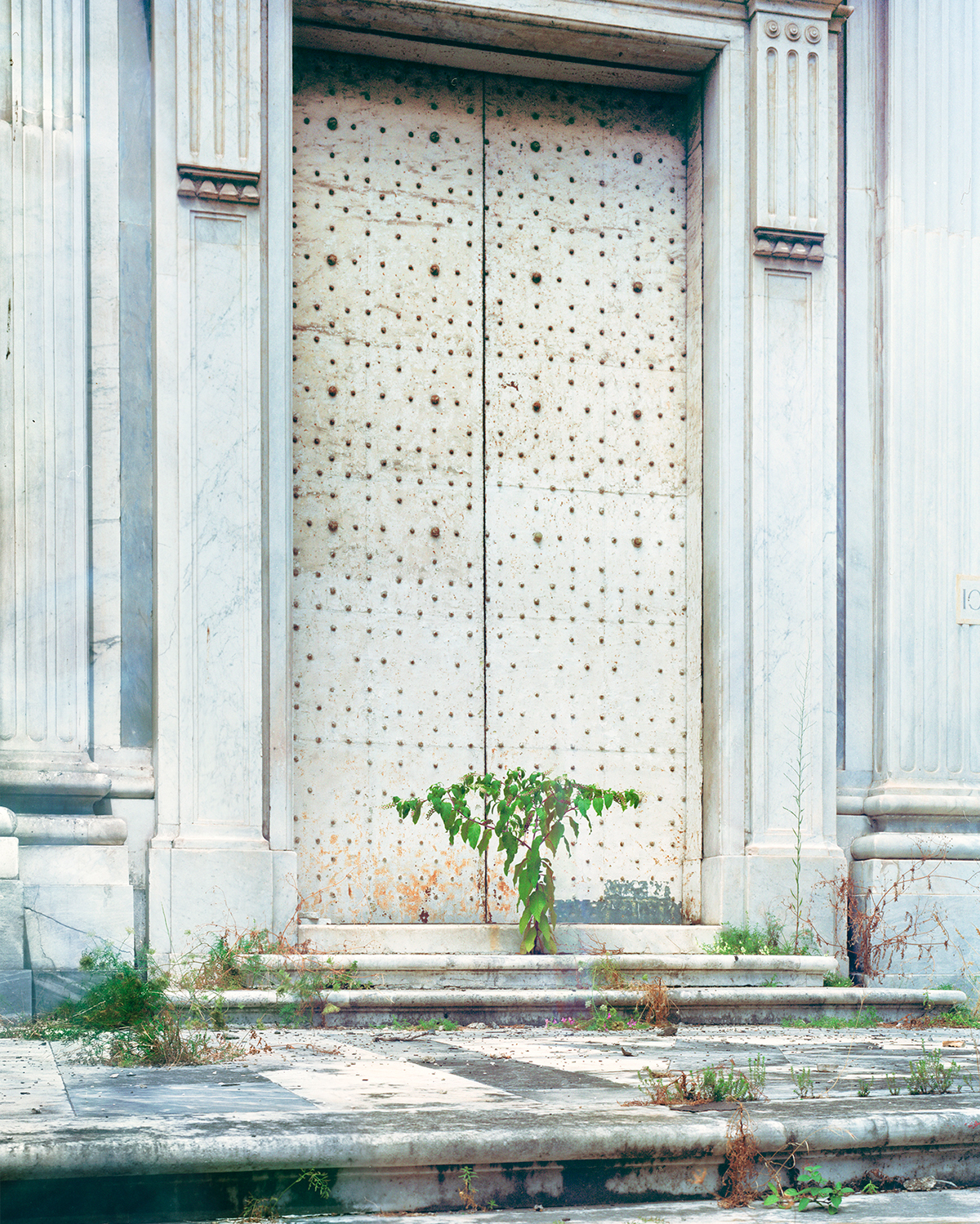
Biblioteca dei Girolamini – Napoli, Italy – 24/08/02015
The Biblioteca Girolamini is the library associated with the church since the 16th century. It is the oldest library in Naples, founded in 1586. It has contained around 150,000 volumes including 5,000 from the 16th Century and 120 books printed before 1501, known as incunabili. In December 2013, news reporting was published that there had been systematic looting of the Biblioteca Girolamini. Images showed empty shelves and tables piled with papers. The director, Marino Massimo de Caro, was involved. De Caro was arrested soon after investigations began in 2012. Investigations showed that vehicle-loads of books had been removed and sold by the now-convicted criminals, who had waited until after normal working hours, turned off the rudimentary CCTV system, and then proceeded with their looting. Five-hundred books went to a German auction house, which gave the thieves a million euros in advance for the batch. They would have received more cash if the sale had gone through.Some could have been sold for hundreds of thousands of euros, some for tens of thousands, so a reasonable overall guesstimate, may be in the tens of millions of euros.

University of Neuchâtel – Neuchâtel, Switzerland – 18/03/02014
This is one of the tiniest miniaturised atomic clocks in the world. Atomic clocks are the most accurate time standards, regulated in correspondence with the vibrations of particular atomic or molecular systems. The future plan is to add atomic clocks in portable devices to improve synchronisation of communication networks, and increase transfer rates through high accuracy coordination between devices. Atomic clocks are useful in telecommunications for time multiplexing techniques. When transferring data from point A (e.g. a mobile phone) to point B (e.g. a base station of the cellular network), atomic clocks allow multiple users to transmit information packets on a single channel or frequency. This requires highly accurate synchronisation of emitters and receivers to identify time gaps between each of the signals. The more accurate the clock, the more data can be sent over a single channel.
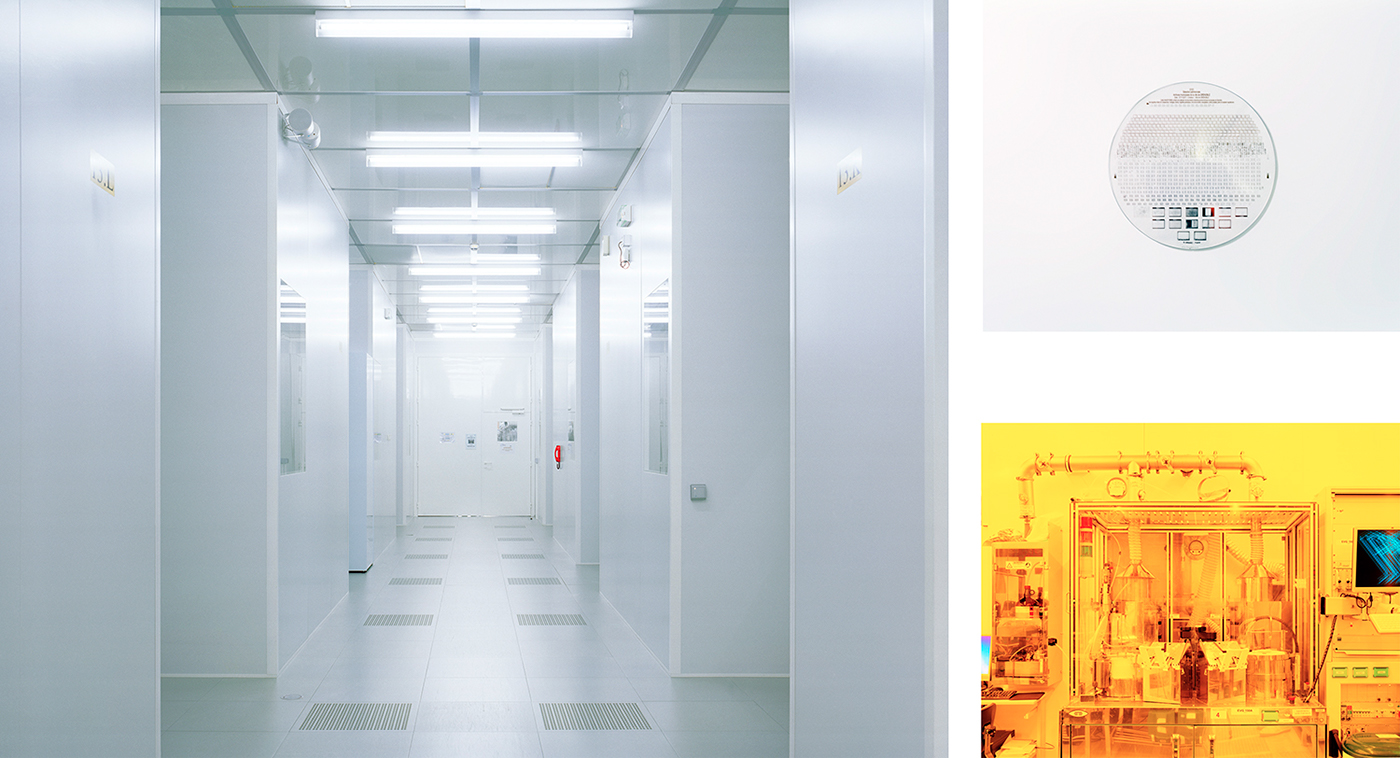
ARNANO – Grenoble, France – 20/03/02014
ARNANO, a French company specialising in microelectronic technology, has created a perennial support for microscopic engraving technologies. Microscopic engraving is a technology used for archiving purposes due to the longevity of its results. The method is executed on ultra-resistant wafers made of synthetic sapphire. The wafers are often no more than 200 mm in diameter with a resolution of 20 nanometers. All types of information can be recorded on this extremely durable support. Synthetic sapphire can resist fire and acid, and remain intact for several millenniums. The technology used to produce the disks is called Mineral Thermolithography. It is based on the thermal exposure of a thin reactive metal film. After the surface preparation, the metal film is fixed on the sapphire disk. Following this, the information is engraved on the wafer with a laser, and the exposed areas removed. The production costs around 5000 euros per disk. Arnano uses the same technology to create dials for luxury watches, their principal source of income.
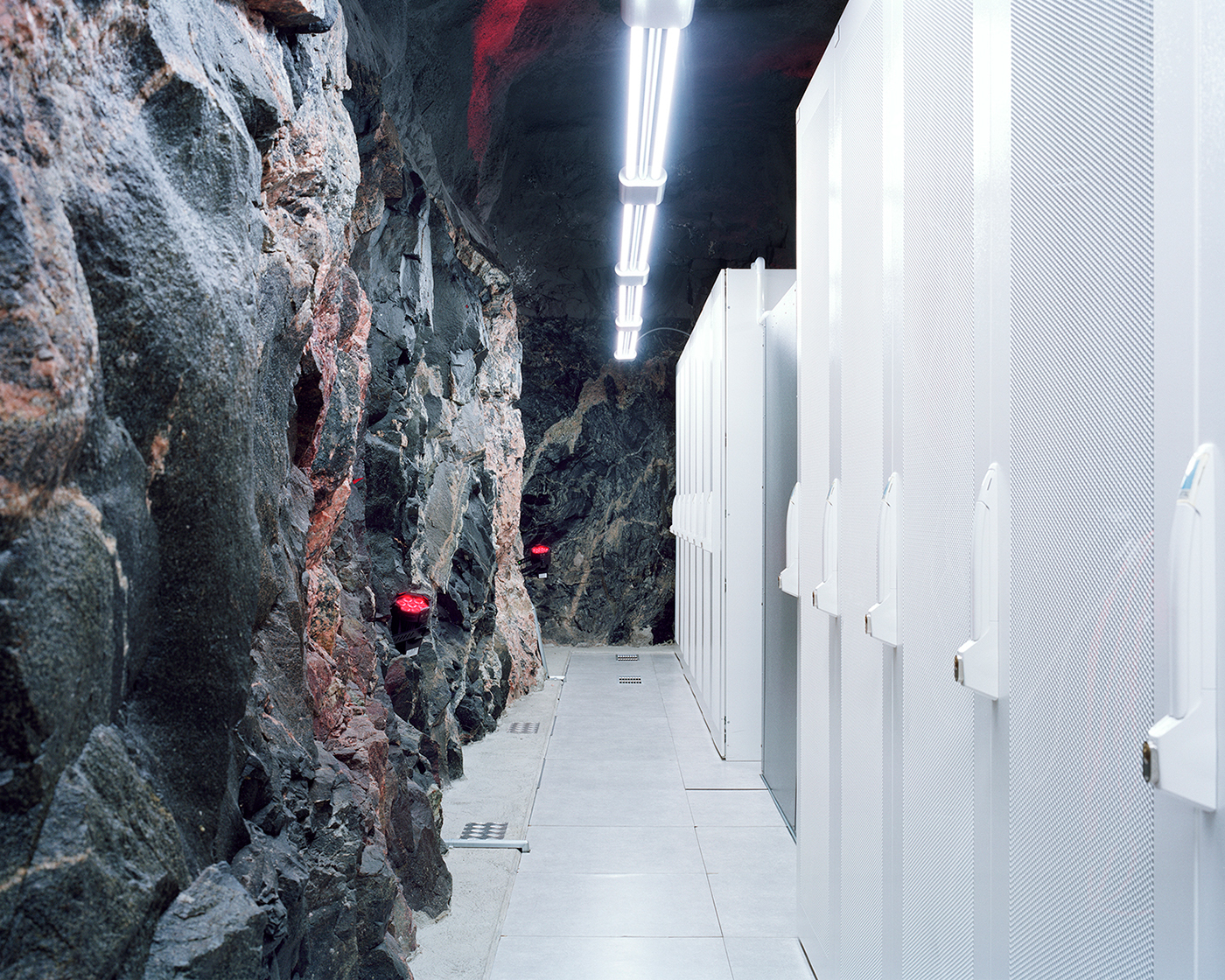
Wikileaks, Pionen Data Centre – Stockholm, Sweden – 04/11/02014
Wikileaks has multiple servers in Sweden and Iceland to optimise the safety of its data. In 2010, The Swedish Pirate Party made a deal with Julian Assange to host several new Wikileaks servers. In addition, The Party provided free bandwidth to assist the organisation with its efforts to increase the transparency and accountability of political establishments internationally. Wikileaks opted to move some of its servers to Pionen, a former civil defence centre built in the White Mountains in the Södermalm Borough, Stockholm. The facility was originally constructed in the 1943 during The Second World War to protect essential government functions from bombings. The underground bunker was converted into a data centre by the Swedish broadband provider Banhof in 2008. The bunker is buried under a hoard of 30 meters of granite, secured by 40 centimeters thick door, backed up with generators from German submarines, and is only reachable via single entrance tunnel. This said, the likelihood of the law enforcement to physically seize or destroy the organization’s equipment is much less likely than a legal attempt to gain direct access to Wikileaks’ data.

Public Library of Stockholm – Stockholm, Sweden – 05/11/02014
Stockholm Public Library includes more than 2 million volumes and 2.4 million audio tapes, CDs and audio books but are now in surplus. The library is waiting for an extension but it was put on hold in late 02009 due to a change in city government. The air in the basements of the library are polluted by Radon, a radioactive, colorless, odorless, tasteless noble gas, occurring naturally as an indirect decay product of uranium or thorium. In an amount 100 times more than normal, a regular and prolonged presence may cause lung cancer. The makeshift ventilators aim to renew the air.

Topography of Knowledge

Royal Library of Belgium – Brussels, Belgium – 29/05/02012
The Royal Library is one of the most prestigious institutions in Belgium. It has its origins in the fifteenth century, in a unique collection of illuminated manuscripts amassed by Philip the Good, The Duke of Burgundy from 1419 to 1467. Philip the Good’s collection consisted of approximately 900 volumes at the time of his death. Nearly hundred years later, in 1559, Philip II of Spain granted the collection the title ‘Royal Library of Belgium’. It was opened to the public in 1839. Few years later, the old collections of the City of Brussels were acquired by the new Royal Library. The construction of the new library building was finished in 1969. Its collections now host over 6 million volumes and 150 kilometers of shelves spread over to 17 floors.
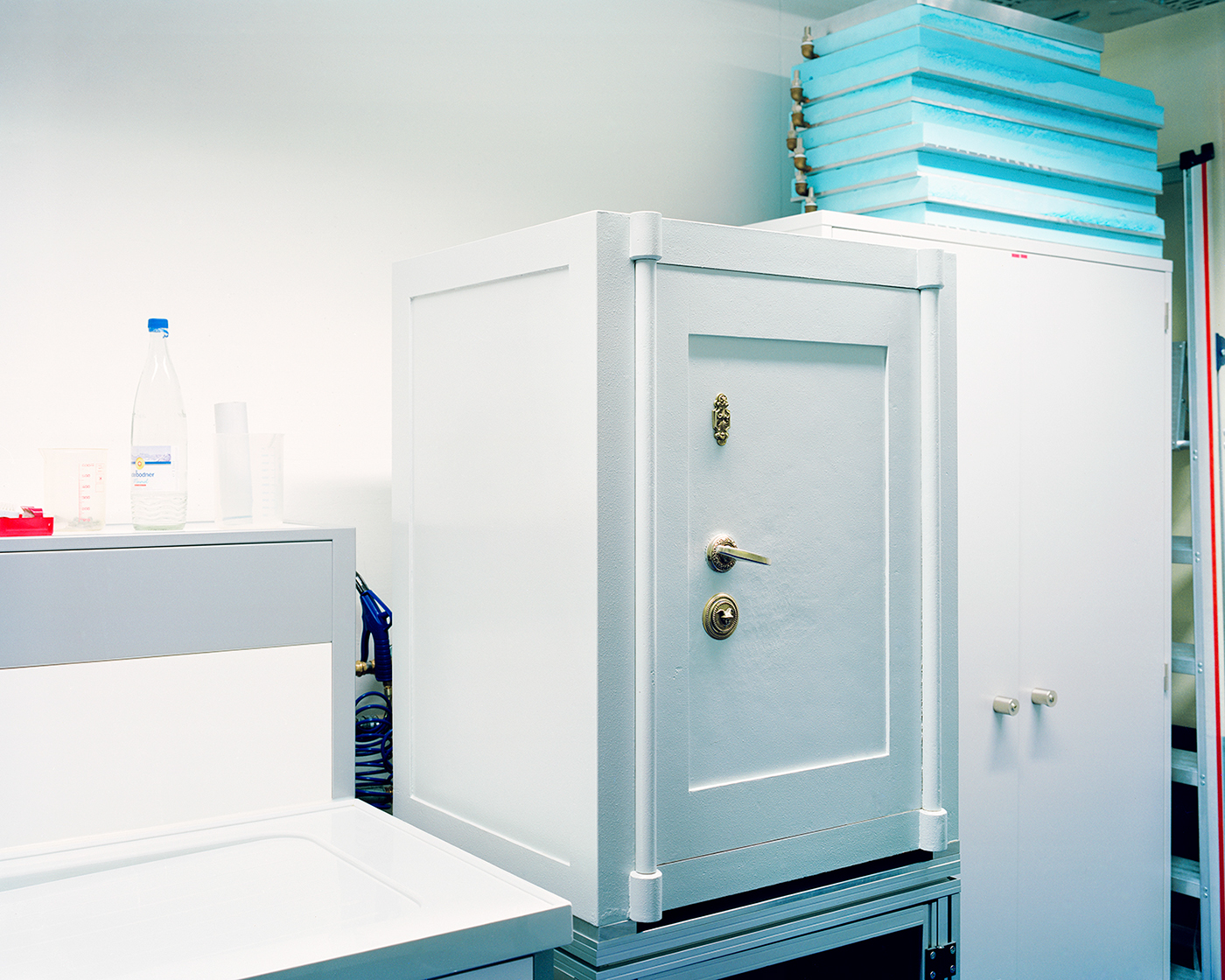
Metas (Swiss Federal Office of Metrology) – Bern, Switserland – 17/03/02014
Inside this vault stands one of the six official copy of the International Prototype Kilogram in Paris, the original artifact whose mass defines at present the SI unit of mass. The kilogram is the only base unit that is still defined directly by a physical object rather than a fundamental physical property that can be reproduced in a laboratory. The IPK is of cylindrical form, with diameter and height of about 39mm and is made of an alloy of 90% platinum and 10% iridium. Air and manipulation can cause micro-material losses despite its constitution and is kept under conditions specified by the 1st CGPM in 1889. In fact, every year the standard kilogram changes weight. Access to the IPK and its copies is under the strict supervision of the International Committee for Weights and Measures. In 02018, the standard kilogram could be replaced by the Planck constant.

Competitors at the World Memory Championships in London – 02012-02013
Created in 1991 by Tony Buzan and Raymond Keene, the World Memory Championships is a memory sports competition in which attendants have to memorise as much information as possible within a given timeframe: numbers, binary digits, random lists of words, names and faces, historical dates and abstract images. The Championships is now administrated by the World Memory Sports Council, which oversees the rules that govern all competitions. One of the Council's main objectives is to ensure fair play through its Ethics Committee.
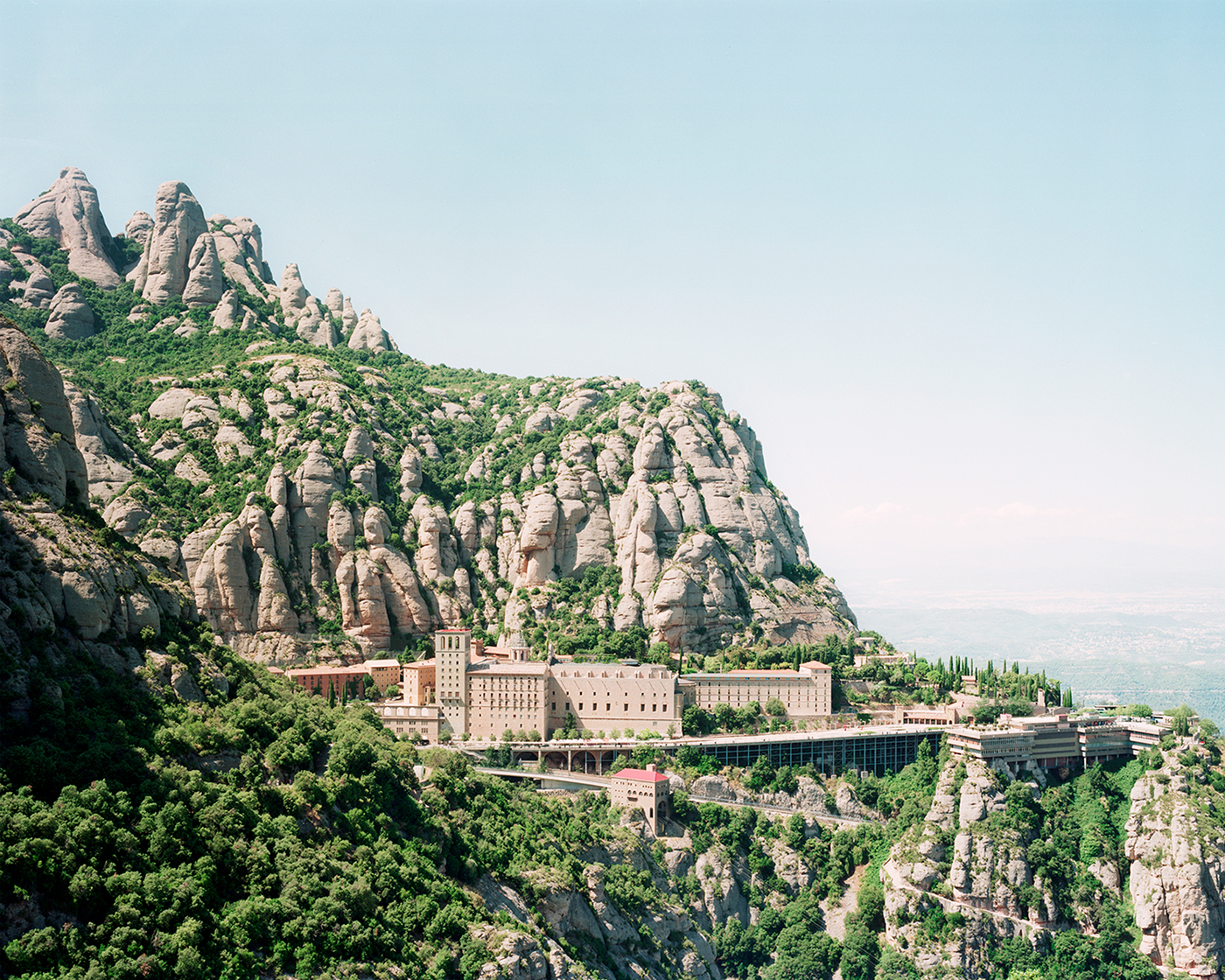
Montserrat Monastery – Montserrat, Spain – 01/08/02016
Google has scanned 23,400 books that belong to the Monastery of Montserrat without payment. Father Damià Roure, The Library Director at the Monastery, never imagined that Google could make money with the numerical copies of his books. Curiously, I was being refused access to the Library. The official argument was that the facility is strictly reserved to the Christian community.

Reyers Bridge – Schaerbeek, Belgium – 08/07/02016
According to the former director of the AED (Administration of equipment and travel), Christian De Buysscher, tunnels bruxelloins archives were stored for several years in one or the bridge piers of a viaduct connecting the highway Liege boulevard Reyers.
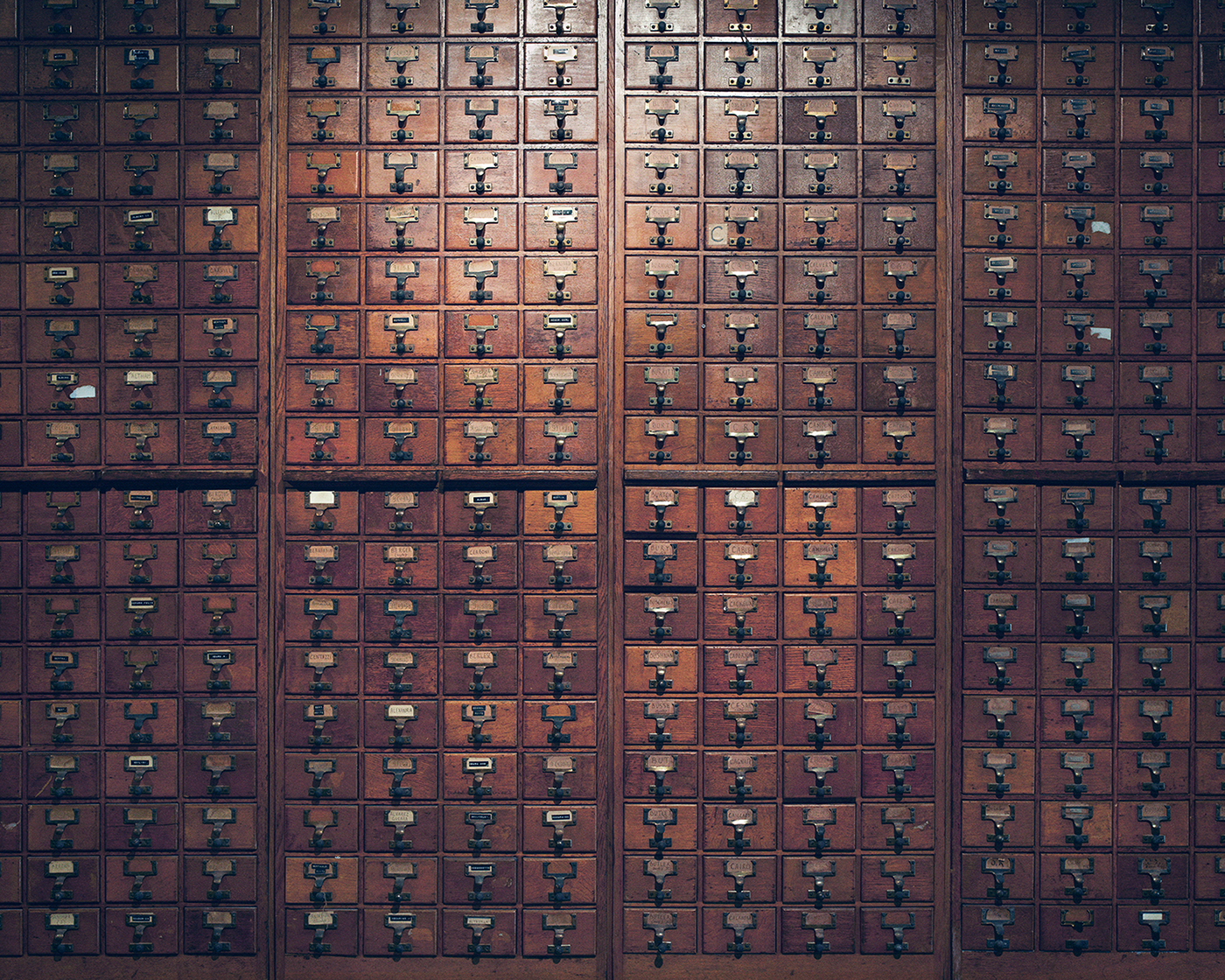
Mundaneum – Mons, Belgium – 09/03/02013
The Mundaneum was an institution created in 01910 by Belgian lawyers Paul Otlet and Henri La Fontaine. It aimed to gather together all the world’s knowledge and classify it according to a system they developed called the Universal Decimal Classification. Otlet regarded the project as the centerpiece of a new ‘world city’—a centrepiece which eventually became an archive with more than 12 million index cards and documents. Some consider it a forerunner of the Internet (or, perhaps more appropriately, of systematic knowledge projects such as Wikipedia) and Otlet himself had dreams that one day, somehow, all the information he collected could be accessed by people from the comfort of their own homes.

Pont d’Arc Cavern – Vallon-Pont-d’Arc, France – 06/07/02016
The Pont-d’Arc Cavern is the largest decorated cave replica in the world. It features an extraordinary collection of paintings, drawings, and engravings reproduced from the original Chauvet Cave, closed to the public since its recovery in 1994. The construction of the replica began in October 2012 and it was opened to the public in 2015. The cavern covers 3000 square meters of floor surface. 150 kilometers of metal rods were welded to form grids imitating the shapes of the original cave. The replica is enveloped by 8000 square meters of geomorphically diverse walls. Based on 6000 images, sculptors were invited to model the wall surfaces with special mortars. To create the facsimiles of the original cave decorations, they worked with pigments and charcoal, the same materials as did their distant ancestor. The ambition was to create an environment that would resemble the original Chauvet Cave as closely as possible. This meant having the characteristics of the subterranean climate, including humidity and darkness.

Space Station Data Center – Kista, Sweden – 05/11/02014
The Space Station Data Centre is the first modular data hub created by the Swedish broadband provider Banhof. The installation functions as a mobile and cheap shelter for servers using the outside temperature to keep them cool. The construction features a spacious double-wide module built of bullet-proof steel to protect the servers. These various armour blocks are connected to “The Dome,” an inflatable central vestibule that accommodate the security staff. The entire apparatus stands on red lava stones imported from Iceland. To emphasise the otherworldliness, the opening mechanisms of the data centre doors make an identical sound to the doors on the spaceship in the film Alien.

